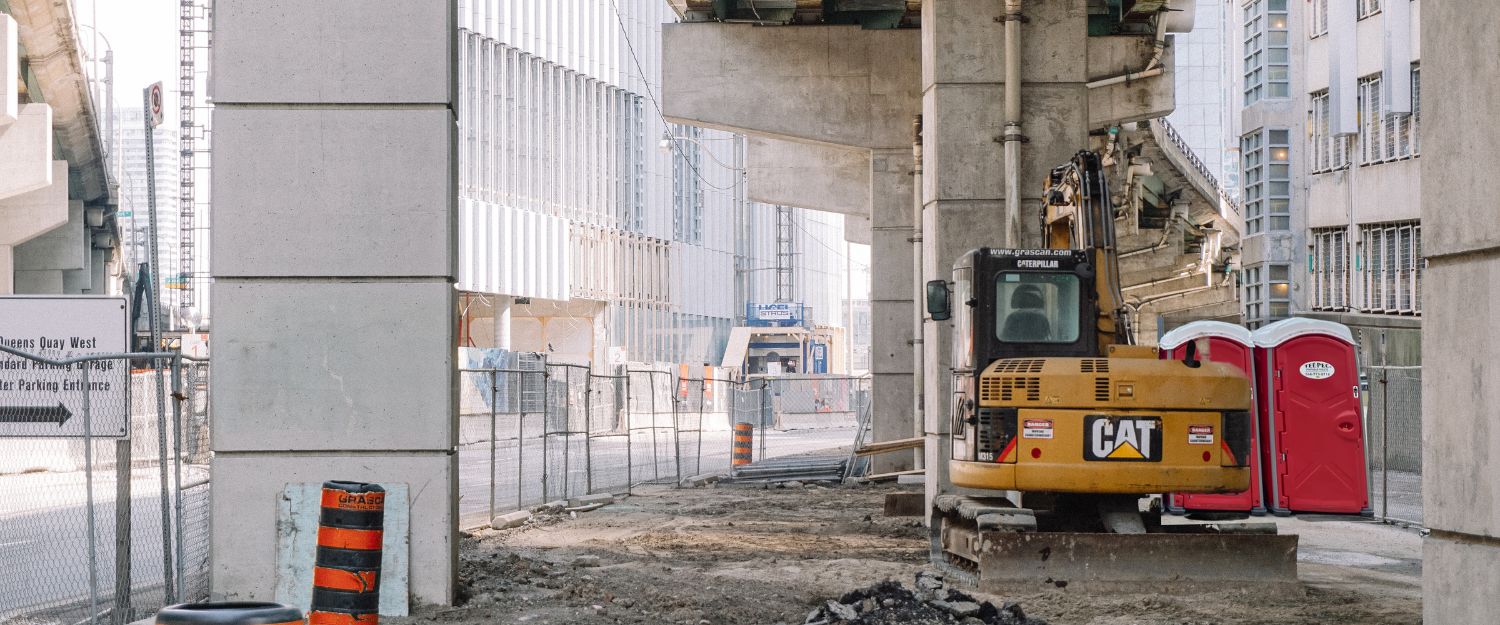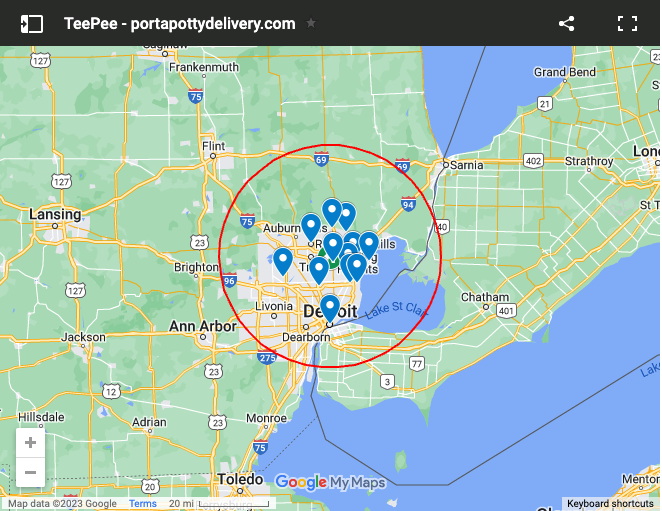
Porta Potties on Construction Sites: Requirements and Best Practices
Construction site sanitation facilities are essential for worker health, safety, and productivity. Understanding and implementing proper portable restroom management ensures both workplace compliance and worker well-being throughout the project timeline.
OSHA Requirements for Construction Site Sanitation
The Occupational Safety and Health Administration (OSHA) provides specific requirements for toilet facilities at construction sites under standard 29 CFR 1926.51(c)(1). These requirements establish the minimum number of facilities needed based on workforce size:
- 20 or fewer workers: 1 toilet
- More than 20 workers: 1 toilet seat and 1 urinal per 40 workers
- More than 200 workers: 1 toilet seat and 1 urinal per 50 workers
These numbers represent minimum standards, and additional facilities may be necessary based on shift length, site size, and local regulations.
Construction site handwashing stations also play a critical role in maintaining worker health and OSHA compliance. These portable sinks typically feature foot-operated pumps, fresh water tanks, and soap dispensers. Regular maintenance aligns with porta potty service schedules, including daily supply checks and weekly thorough cleaning. For construction sites, the units must be readily accessible within the same distance requirements as toilet facilities, and they should include proper lighting and stable ground placement for safety.
Strategic Placement and Safety Considerations
OSHA requires that toilet facilities be "readily accessible" to all workers. While there isn't a specific distance requirement, OSHA interprets "nearby" as being accessible within a 10-minute walk. Many construction sites aim for closer placement to enhance productivity and worker comfort.
Key placement factors should consider:
- Stable, level ground for unit stability
- Clear access paths for workers and service vehicles
- Adequate lighting for safety
- Protection from construction traffic
- Proper orientation for ventilation
Maintenance Standards and Schedules
According to the American National Standards Institute (ANSI), porta john toilets used by up to 10 people should be cleaned at least once per week. However, OSHA requires that all facilities be maintained in a sanitary condition, which often necessitates more frequent servicing based on usage.
Regular maintenance should include:
- Waste removal and cleaning
- Supply restocking
- Sanitization of surfaces
- Structural safety checks
The frequency of maintenance should be adjusted based on factors such as worker count, weather conditions, and usage patterns to maintain sanitary conditions.
Weather Adaptations
Weather conditions significantly impact portable sanitation maintenance and functionality. Construction sites must adapt their facilities and service schedules to maintain sanitary conditions year-round.
For hot weather:
- More frequent cleaning and servicing
- Enhanced ventilation
- Strategic placement for shade
- Regular supply checks
Cold weather considerations include:
- Protection of pipes and tanks from freezing
- Use of cold-weather appropriate materials
- Additional maintenance checks
- Heating solutions when necessary
Accessibility Requirements
OSHA requires accessible restroom facilities for all employees on construction sites. Accessible facilities must accommodate workers with disabilities and meet fundamental access standards.
The access path to facilities requires firm, level ground with no obstacles or barriers. Grading or temporary ramps may be necessary to ensure safe passage. The path should be wide enough to accommodate wheelchairs and maintain stability in various weather conditions.
Construction sites should ensure:
- Accessible paths to facilities
- Adequate interior space
- Appropriate fixtures and support features
- Regular maintenance of accessibility features
Documentation for Compliance
OSHA requires employers to maintain records demonstrating compliance with health and safety standards. For portable sanitation facilities, this includes:
- Maintenance and service records
- Inspection documentation
- Response to worker feedback
- Compliance with local permits
- Safety inspection records
Conclusion
Effective management of portable sanitation facilities requires careful attention to regulatory requirements, worker needs, and site conditions. By following OSHA standards and implementing industry best practices, construction sites can maintain safe, compliant, and efficient facilities for their workforce.
We Deliver Throughout Greater Detroit!
Our Service Area
Proud to Serve The Following Areas:
- Auburn Hills
- Berkley
- Birmingham
- Bloomfield Hills
- Center Line
- Clawson
- Clinton Township
- Detroit
- Fraser
- Macomb
- Madison
- Mount Clemens
- Rochester
- Rochester Hills
- Roseville
- Royal Oak
- St Clair Shores
- Sterling Heights
- Troy
- Utica
- Warren
- Washington
- All Areas In Between
If your party or event is beyond that radius, just let us know! We may be able to make special accommodations to suit your event.
NOTE: Fees may vary depending on how far you are outside our service area.


Why Customers Trust Us for Clean, Reliable Porta Potty Rentals
Frequently Asked Questions
How many bathrooms do I need per person at an event?
We recommend that you have at least one bathroom for every 75 guests at a four-hour event and twice as many for an eight-hour event, such as a concert. If the event serves alcohol, we recommend you add 20% more restrooms. Keep in mind that it is also important to have at least one hand washing station for every four porta potties unless you rent porta potties with in-unit sinks. Should your event serve food, portable sinks or hand sanitizer stations are a requirement.
What is an ADA portable restroom?
ADA-compliant portable restrooms are porta potties designed to accommodate people with disabilities and special needs. They are more spacious than our traditional porta potty rentals and come equipped with features like grab bars and low ground clearance for easy wheelchair access. They are also good for families with young children who need their parents to accompany them. We offer ADA portable restroom rentals as well as ADA accessible portable restroom trailers to accommodate all our customers’ needs.
How do portable restrooms work?
Typically, portable restrooms tanks are emptied with a vacuum attached to the porta potty tank via a hose, which sucks the waste into a storage unit mounted onto a truck. The unit is then filled with fresh water and a cleaning chemical solution, and sanitation workers spray down the entirety of the interior to rid it of any bacteria. Then they restock hygienic necessities like toilet paper, and the porta potty is ready for use again, good as new.
Are there any special requirements for placing porta potties at my event?
Keep your distance from the main event but within 30-40 yards. On longer-term rentals requiring service, keep them within 20 feet of a main road or driveway. Stay away from low places which might get muddy if it rains the night before your event. Select a paved surface if possible, especially if you'll have people with special needs attending.
What types of events to you rent porta potties for?
Porta potties are typically rented for outdoor events where traditional restroom facilities are not available. Porta potty rentals are usually seen at school festivals, church carnivals, neighborhood parties, outdoor movies, school and youth athletics, and more.
